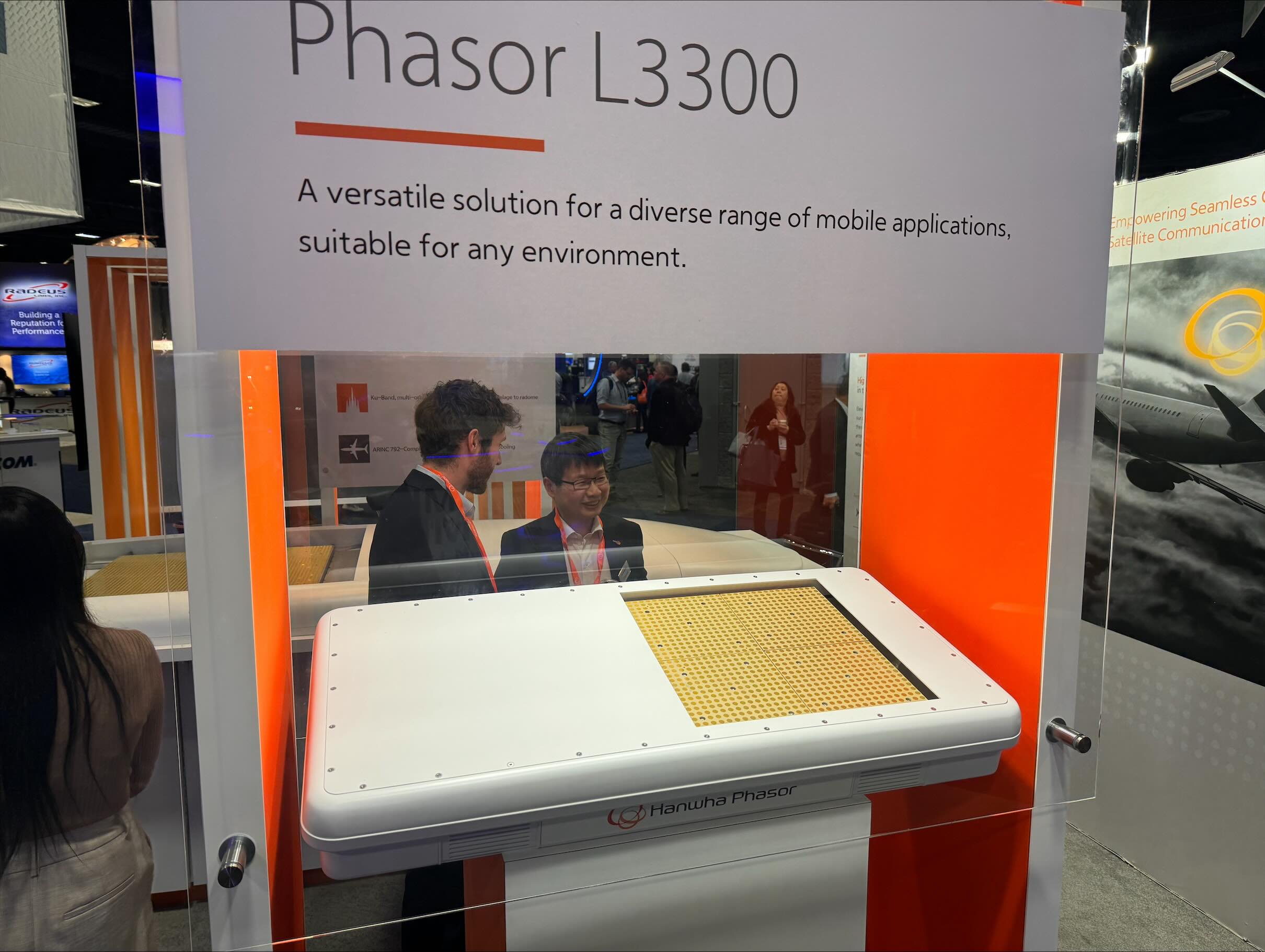WASHINGTON — U.K.-based Hanwha Phasor plans to release its first flat panel antenna this summer to join a wave of multi-orbit broadband terminals coming to the market in 2024.
Phasor L3300B is designed to connect land vehicles for government and commercial users seeking connectivity from Ku-band satellites, such as those in Intelsat’s geostationary fleet or the low Earth orbit (LEO) OneWeb network.
Weighing 30 kilograms with a 15-centimeter thickness, the electronically steered antenna is mainly targeting users of military and first responder vehicles.
Hybrid antennas promise customers greater network redundancy and the flexibility to access the strengths of various orbital regimes without the need for multiple terminals, making them particularly suitable for vehicles on the move.
Hanwha Phasor has a terminal development agreement with OneWeb and plans to finalize tests with the operator over the next few months, according to Hanwha Phasor chief operating officer Dominic Philpott. The company is also in early talks with other operators to test Phasor L3300B with geostationary satellites.
Speaking to SpaceNews here after announcing plans March 20 to start shipping the terminals sometime between July and September, Philpott said Hanwha Phasor is talking with potential military customers across the United States, Europe, and South Korea.
“We haven’t taken any orders yet,” Philpott said, “but we suspect in the next three months that’s going to change.”
He said internal development work for a separate flat panel, multi-orbit Ku-band terminal designed for aircraft is also on track to be completed this summer, but flight safety certification processes will likely push out its commercial release to the second half of 2025.
“We’re getting a huge amount of interest from lots and lots of people from different domains.” he added, marking “the start of a successful future for the company.”
Hanwha Phasor’s first antenna is due to hit the market four years after it was sold South Korean defense firm Hanwha Systems, which bought the company out of bankruptcy after it ran out of cash to develop the technology.
Hanwha Systems, part of South Korean conglomerate Hanwha Group, was also an early investor in OneWeb and has plans for its own low Earth orbit constellation.
“Although we’re part of Hanwha Group we’re very much run as an independent company,” Philpott said, adding that Hanwha Phasor is not involved in any plan for a South Korean constellation.
With Hanwha’s financial support, he said Hanwha Phasor has grown from nine employees at the time of its sale in 2020 to 110 people.
U.S.-based Kymeta announced March 18 that it had started shipping its military-focused Osprey u8 HGL terminal, the first flat panel antenna able to connect to Ku-band satellites in geostationary and low Earth orbit.
Other manufacturers with multi-orbit flat panel terminals slated for release this year include U.K.-based All.Space, Israel’s GetSat, and Requtech of Sweden.
Related
Read the original article here
